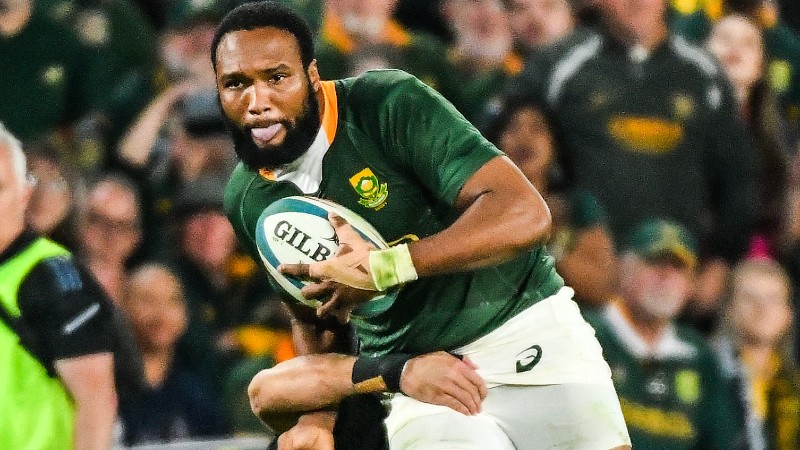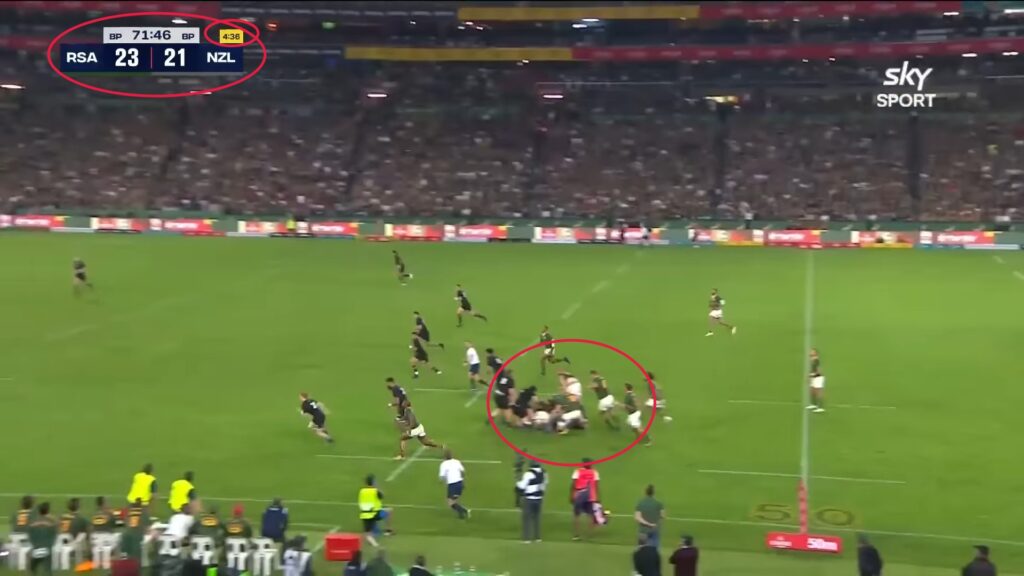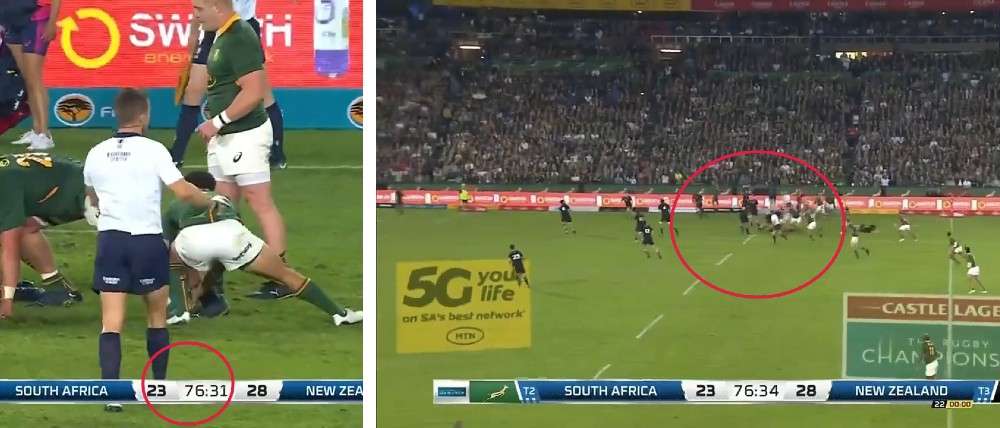Rugby
OPINION: Springboks v All Blacks — Where the Boks Went Wrong & How to Improve
What lessons can be learnt from the defeat at Ellis Park?

They say you learn more from a loss than a win, and in that regard, the Springboks can take a lot away from Saturday’s Test against the All Blacks in Johannesburg. After conceding two early tries and pulling off a spectacular comeback to get into the lead, only to lose the game in the dying minutes, South Africa has showcased exactly what they’re good at, and what they’re not.
On the most positive note, it’s blatantly obvious to confirm that the rivalry between the Springboks and All Blacks is alive and well; and while fanatical Bok fans will be unlikely to praise the All Blacks, it’s great to see New Zealand sticking it to the critics and proving them wrong. While they may have lost their way a bit, they still very much are the All Blacks.
As for South Africa, it was a fairly disruptive game from the get-go, with another early head injury forcing a change which was already somewhat of a makeshift solution. Jessie Kriel having to leave the field in the opening stages left the Boks with a bit of a disrupted backline, not to mention an early yellow card to Damian Willemse which really shook up the structure.
With that said, the Springboks expressed how dynamic they can be, with Lukhanyo Am hanging around the wing for portions of the game and, admittedly, excelling there, despite being considered the de facto outside centre in the world right now.
While the forced changes were turbulent, there were some notable shortcomings with the starting picks too. Joseph Dweba played well but was targetted by the All Blacks, with New Zealand coach Ian Foster even confirming that notion. Immense pressure in the lineouts caused Dweba’s throws to drift further and further from the middle, resulting in some lost balls in an area where the Boks usually thrive.

Furthermore, while Duane Vermeulen is usually the thorn in the side of the All Blacks, throwing him back into the occasion not long after his knee injury proved to be a little too much too soon. While he didn’t do anything wrong, the impact and ferocity he usually brings seemed lacking. While this was a big game for some big players, the timing seemed off.
Even with key players not being at their best, credit has to be given to the Bok backline, who delivered threatening and rapid running that ripped the All Blacks to shreds a number of times. Am, Le Roux, Willemse, Pollard, Mapimpi, and the linking forwards allowed the Springboks to beat New Zealand at their own game, with a game focused on width and speed rather than brute force. While some of the tries were undone by preceding infringements, there were some fantastic uses of space and an intent to attack from deep, which is an arrow in the Boks’ quiver that’s growing in strength.
The most bizarre element of Saturday’s game, though, has to be the game management aspect of the Springboks. South Africa’s tried-and-tested kicking pressure — utilising box-kicks — which they’ve almost perfected since 2019 works wonders throughout games, with the Springboks putting effective chasing wingers after the kicks, and utilising their breakdown prowess to either win back the ball, force a penalty, or pick up a lucky bounce or fumbled ball (as was the case with Kurt-Lee Arendse’s first try in the first Test). However, there’s a caveat to this strategy.
When the Springboks are in the lead with a lot of time left on the clock, applying more pressure to desperate teams isn’t the worst idea. After all, the Springboks are often more comfortable without the ball, than with it. But with that said, Saturday’s Test saw the Springboks up by 2 points in the 71st minute, and decided to apply the same kick pressure, despite being in the All Blacks’ own half. Not to mention that they’re down a man (Beauden Barrett) as a result of a yellow card too.

The best case scenario would’ve been that the All Blacks drop the ball, the Boks scoop it up and score; or the kick is pinpoint, the All Blacks take it cleanly, a big tackle is made and a turnover or penalty is forced. Possibly, they could take it cleanly, call a mark, and kick for the halfway line, giving the Springboks a lineout (further than the original box-kick point), but this also provides the All Blacks with a chance to win it back. And the absolute worst-case scenario: the All Blacks take the kick cleanly and counterattack… which is exactly what they did, with Reiko Ioane running 80-odd metres, and a try being scored just after (you can witness it below), followed by a second try which put the nail in the coffin of the Springboks.
There’s no doubt that the constant-pressure box-kick strategy of the Springboks works and makes sense, but after it failing and now losing in the 76th minute (and already in the opposition’s own half), it doesn’t. But, alas, the strategy is repeated again.

Some self-awareness and confidence from the Boks are needed. The Springboks were causing the All Blacks trouble with their backline, and with the New Zealanders huffing and puffing in the final stages of an altitude-defying Ellis Park, maintaining possession and going for the throat would likely have proven to be more effective. Even if it didn’t work, there would be no question as to the intent and direct nature to solve the 5-point deficit.
If the Springboks can learn anything from Saturday, it’s that they’re better than they think they are with the ball in-hand, and that the scoreline and clock play a role in your do-or-die decisions — something I’d argue that every schoolboy rugby player has had drilled into them.















